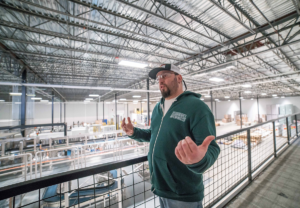About half of injury cases settle without suit being filed. When suit is filed, more than 98% of the cases settle without going to trial. Claims of less than $50,000 at issue are resolved by arbitration. In Maricopa County, Arizona’s most populous county, fewer than one percent of civil (not criminal) cases are resolved by jury.
…fewer than one percent of civil (not criminal) cases are resolved by jury
Only claims with much at stake or the most complicated or hard fought cases are the ones that have to be tried.
The ability to prepare and present a claim for injuries or death to a jury is a measure of the experience, ability and competence of a particular law firm. The courage and willingness to take the case through trial gives law firms an edge when negotiating a settlement.
With that in mind, there follows examples of injury, death, insurance and damages claims which have actually gone through trial by our attorneys. Each trial represents nearly a hundred other similar claims which were settled without having to be tried to jury.
A Sampling of a Jury Trials to completion
 Crash of an observation helicopter which hit power lines in rural part of the state, which killed one passenger and left another with severe injuries. Issues of pilot error, government liability for failing to mark power lines, emotional damages for loss of family member and prognosis for recovery from orthopedic injuries.
Crash of an observation helicopter which hit power lines in rural part of the state, which killed one passenger and left another with severe injuries. Issues of pilot error, government liability for failing to mark power lines, emotional damages for loss of family member and prognosis for recovery from orthopedic injuries.
Medical helicopter crashed into slope of a mountain while flying in thick clouds, leaving two dead and one severely injured. Issues of negligent piloting, weather observation, and personal grief and economic losses.
Crash of observation helicopter in Appalachians which injured pilot and two passengers. Issues of helicopter product design and maintenance, fuel system failure, pilot error, and extent of medical treatment for injuries.
Fracture of bone surrounding prosthesis after hip replacement surgery of passenger who stepped off the stairs of still moving commuter airline to escape fire on the engine on the opposite side of the aircraft. Issues of comparative fault and extent of medical treatment.
Injury to inner ear and tympanic membrane as a consequence of pressurization of commercial jetliner leading to barotrauma. Issues of medical causation, flight standards, design of aircraft pressurization system, and effect of eustachian tube anomaly under normal pressurization.
Crash of logging helicopter in Canada which destroyed the aircraft and injured its pilot. Issues of negligent piloting, engine maintenance and documentation, turbine engine overhaul and inspection standards, crack growth calculation in titanium alloy, failure mechanism of part, and value of helicopter.
Grand Canyon tour plane had an engine failure during takeoff and crashed into the forest, leaving eight severely injured European tourists. Issues of negligent piloting, negligent maintenance and the extent of orthopedic and neurological injuries.
Injury to neck from being struck by carry on suitcase which fell from overhead storage on commercial airline. Issues include flight attendant standards, medical causation, fault of fellow passenger and recoupment of payment from government.
 Collision between semi tractor trailer of national trucking company at an intersection in the Midwest, which killed the driver, a father of seven, and severely injured two family members. Issues of negligence, trucking standards and record keeping, economic losses, choice of law, and constitutionality of punitive damages.
Collision between semi tractor trailer of national trucking company at an intersection in the Midwest, which killed the driver, a father of seven, and severely injured two family members. Issues of negligence, trucking standards and record keeping, economic losses, choice of law, and constitutionality of punitive damages.
Failure of transmission of 14 passenger van which caused a crash in Idaho and injured all occupants. Issues of defective product, automotive engineering, legal consequence of failure to use seatbelt, conflict between laws of different states, and severity of damages.
Cab company liability for failing to provide uninsured motorist insurance coverage for independent owner operators.
Left turn by vehicle into oncoming traffic on state highway. Issues of comparative fault, allocation of fault to underinsured motorist, orthopedic injuries and amount of damages.
Seven car pileup on freeway during rush hour. Issues include allocation of fault among several potential causes, negligent operation of cars, and extent of damages.
Sideswipe collision between cars on freeway. Issues of causation of injuries from slight impact.
Automobile collision between merging vehicles. Issues include operator error, violation of traffic laws, injuries to back and economic loss due to loss of participation in gymnastics.
Vehicle collision arising from unlawful turn. Issues include allocation of fault among drivers in multi-vehicle accident in the context of underinsured motorist insurance policy.
 Failure of commercial insurance company to defend under a directors and officers insurance policy issued to executive officers of failed investment company charged with criminal acts. Issues include standards for insurers, meaning of language of policy, damages for failure to defend and punitive damages.
Failure of commercial insurance company to defend under a directors and officers insurance policy issued to executive officers of failed investment company charged with criminal acts. Issues include standards for insurers, meaning of language of policy, damages for failure to defend and punitive damages.
Failure of personal lines insurance company to pay promptly and to pay all benefits due under homeowner’s policy after fire. Issues of fair claims handling and meaning of policy language.
Insurance company failure to defend policy holder based upon technical violation of terms of policy. Issues of bad faith and meaning of policy language.
 Fire of mysterious origin which burned two children over 50% of their bodies. Issues of causation of fire, design standards for gas fueled appliances, fire behavior, and medical treatment past and future.
Fire of mysterious origin which burned two children over 50% of their bodies. Issues of causation of fire, design standards for gas fueled appliances, fire behavior, and medical treatment past and future.
Design of propane heater which caused a fire in a small trailer, severely burning family of four. Issues include product design, comparative fault of supplier of fuel, medical treatment for severe burn injuries and economic loss.
Fire of unknown origin which destroyed commercial warehouse. Issues of fire origin and cause, electrical systems, principles of fire propagation and valuations of property damage.
Destruction of home from fire which spread after arrival of private fire department. Issues of negligent firefighting techniques.
Spontaneous fire from generator which ignited home and resulted in death of occupant. Issues of defective design and causation. (Settled the day before trial).
 Defense of manufacturer of string trimmer sued for failing to warn customer about danger of field
Defense of manufacturer of string trimmer sued for failing to warn customer about danger of field
engineered and installed skill saw blade upon trimmer. Issues include design of product, adequacy of warning labels, recovery from near amputation, and comparative fault.
Crushed toes and stripped skin from foot from getting caught in industrial grinder. Issues include commercial machinery design, necessity for guarding obvious hazard, allocation of fault to negligent employer, and treatment with orthopedic and plastic surgery.
Death from asphyxiation from carbon dioxide in defective heater. Issues include negligence of supplier of natural gas, duties of landlord and damages to aging parents from loss of daughter.
Design of propane heater which caused a fire in a small trailer, severely burning family of four. Issues include product design, comparative fault of supplier of fuel, medical treatment for severe burn injuries and economic loss. Related international arbitration of agreement between European manufacturer of heater and American distributor with respect to indemnification of seller.
Wrongful death of man killed when vehicle slipped out of Park as he was hooking up trailer. Suit against manufacturer. Issues of defective design and causation (Settled the week before trial).
 Injury from product falling from grocery store display case. Issues include comparison of fault of grocer, customer and product supplier, and cost and necessity of medical treatment.
Injury from product falling from grocery store display case. Issues include comparison of fault of grocer, customer and product supplier, and cost and necessity of medical treatment.
Slip and fall of young physician at airport which interfered with his career. Issues of failure to preserve video before and after fall, adequacy of warning signs, damages.
Service of alcohol in outdoor event which led to person walking into side of moving car. Issues of standards of service, level of intoxication, detectability of intoxication and extent of damages.
Slip and fall in grocery store from leaking refrigerator display case. Issues include extent of back injuries caused by fall vs. pre-existing conditions, comparison of fault between product supplier, grocer and customer.
User of escalator caught shoe in teeth of a step and injured ankle. Issues include design and maintenance of escalator, signs and warnings, and medical causation of injuries.
 Wrongful death from icing up of bridge spanning deep canyon which lacked warning signs or preventative acts on part of state. Issues include road design standards, allocation of fault to third party and damages for loss of spouse.
Wrongful death from icing up of bridge spanning deep canyon which lacked warning signs or preventative acts on part of state. Issues include road design standards, allocation of fault to third party and damages for loss of spouse.
Wrongful seizure of property by state agency. Issues include constitutional protection against unlawful seizure, government immunity, valuation of products for sale.
Liability for environmental clean up of leakage from storage tanks. Issues include construction of statute, responsibility of adjoining landowners, allocation of fault.
Damage to police vehicle from fleeing suspect. Issues include construction of statute, reliability of testimony, and alternative explanation of intent.
 Amputation of fingers from roping injury. Issues include negligence of team roper, personal obligations of roper for own safety and medical treatment reattaching fingers.
Amputation of fingers from roping injury. Issues include negligence of team roper, personal obligations of roper for own safety and medical treatment reattaching fingers.
Discharge of firearm during a bar fight. Issues include effect of alcohol on judgment, memory, recall, and intent.
A Certified Specialist
in injury and wrongful death litigation
Arizona allows attorneys who have proven experience in a particular area of law to achieve the status of specialist.
A licensed attorney in Arizona must meet the following minimum standards for specialization in injury and wrongful death litigation:
Admission to the practice of law for at least 5 years
Admission to the State Bar of Arizona for 2 years immediately preceding submission of the application
Devotion of at least 50% of a full-time practice to the specialty area
Demonstrate a high degree of skill, thoroughness, preparation, effectiveness, professionalism and judgment in the field of personal injury and wrongful death.
Substantial involvement in the certification area for 4 of the 6 years immediately preceding submission of the application, at least 1000 hours per year, with significant trial experience.
Take and pass a written examination on substantive law and rules of practice, procedure, evidence and ethics pertaining to personal injury and wrongful death.
Additionally, peer review is conducted and a written examination must be passed.
The 10 member Personal Injury and Wrongful Death Advisory Commission must recommend certification.
A demonstration of honesty, integrity, professionalism as defined by the Lawyer’s Creed of Professionalism of the State Bar of Arizona.
Completion of 12 hours of continuing legal education per year in advanced level programs concentrated in personal injury issues, plus 3 hours in ethics.
A complete list of requirements may be found at: HYPERLINK
As of the end of 2017 there were only 140 certified specialists in injury law actively practicing in Arizona.
When a trial judge gets something wrong, or when governing law should be challenged or new law interpreted, the only remedy is to appeal to a higher court. The firm has the reputation and experience in doing that when necessary, as the following cases illustrate:
Law v. Superior Court of Arizona, 157 Ariz. 147 (1988) (adopting seat belt defense in Arizona)
Parker v. Vanell, 170 Ariz. 350 (1992) (construing new comparative negligence statute)
Adiutori v. Sky Harbor Intl. Airport, 880 F. Supp. 696 (D.Ariz. 1995) aff’d in table form, 103 F.3d 107 (9th Cir. 1996) (airport transportation system complied with the Americans with Disabilities Act)
Broadbent v. Broadbent, 184 Ariz. 74 (1995) (abolishing parental tort immunity in Arizona)
Knox v. Southwest Airlines, 124 F.3d 1103 (9th Cir. 1997) (qualified immunity for police officers at the airport, after arrest on the premises)
Garcia v. General Motors, 195 Ariz. 510 (App. 1999) (seat belt defense in conflicts between state laws)
Drucker v. Greater Phoenix Transportation Co., (Ariz. App. 1999) (uninsured motorists benefits for taxicab drivers)
State Farm Ins. v. Premier Manufactured Systems, Inc., 217 Ariz. 222 (2007) (applying comparative fault to participants in the chain of distribution of a defective product)
Webb v. Gittlen, 217 Ariz. 363 (2008) (professional negligence claim was assignable to creditor harmed by insurance agent’s error)
Cook v. Orkin Exterminating Company, Inc., 227 Ariz. 331 (App. 2011) (economic loss rule barred homeowners’ tort claims for ineffective termite extermination services)

